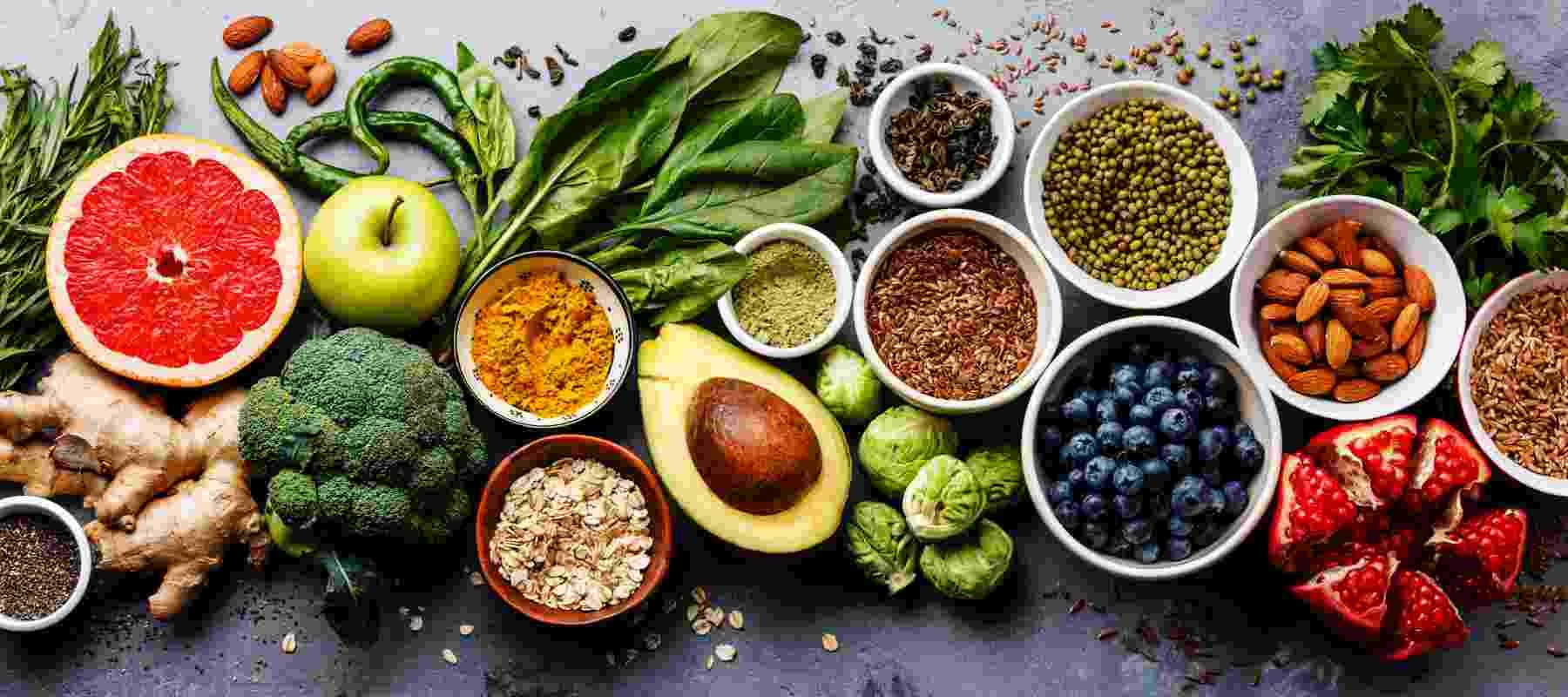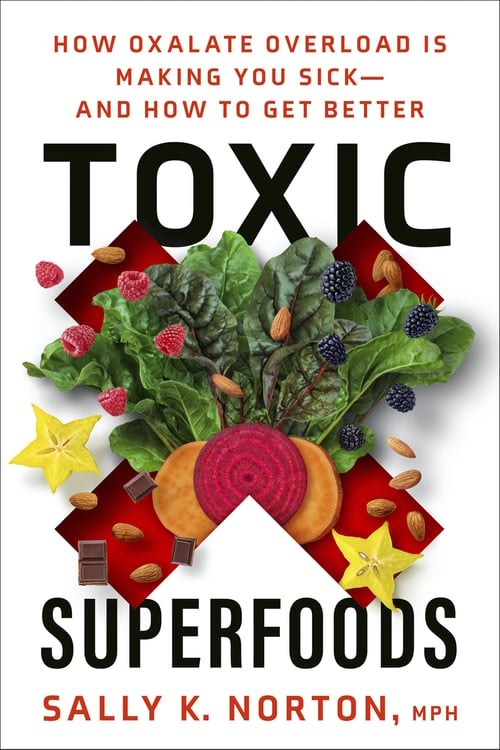
Some healthy foods can cause harm to our bodies
I developed an interest in this topic after my spouse and several patients were plagued with stalled improvement of their health challenges. Why were they not responding and being helped with tried and true methods that worked for so many others? When a patient has less than optimal healing, and is a highly compliant patient, this drives me to search out and acquire the healing puzzle piece(s) that will help that person recover as fully as possible.
A recent patient told me about her health being harmed by oxalates in food. Before this, I really didn't know this substance was a component of many so-called healthy foods, while also being a little known health risk. As is pretty typical, this piqued my interest and lo and behold more information on this topic streamed my way. Currently our household is on a trial period of reducing foods high in oxalates to see if some stubborn health challenges diminish. So far, I can tell you we are quite pleased with the results...even after 4 days on eating a lower oxalate diet.
When a patient has less than optimal healing, and is a highly compliant patient, this drives me to search out and acquire the healing puzzle piece(s) that will help that person recover as fully as possible.
Dr. Karl R.O.S. Johnson, DC, BCN, FIFHI
What are Oxalates?
From a very informative article recently published in the Journal of Health and Healing™ (Price-Pottenger Nutrition Foundation), Sally K. Norton writes, "Oxalates are chemical toxins that hide within many of our most popular foods, even ones that we consider “superfoods.” They are invisible culprits behind a wide range of contemporary health problems. Because many of these foods are so deeply trusted, almost no one is making the connection between their consumption and our most common maladies, including digestive issues, aches and pains, low energy, poor sleep, and worse problems. Oxalate-aware eating is critically important today, and to understand why, some knowledge of the science surrounding them is needed."1
To reiterate, oxalates are naturally occurring compounds found in many foods. A diet high in oxalates can lead to negative health effects. In this post, we'll explore the impact of high oxalate intake on the body and discuss ways to manage and reduce intake.
For a deep dive into this important topic, please consider reading Sally K. Norton's book that was just published in December, 2022. Besides being excellently written, the resources in this book are very helpful in assisting you to implement a low oxalate diet. If you are interested in knowing more about the science behind oxalates you can visit sallyknorton.com/oxalate-science/.
significant Health Challenges Caused by too many Oxalates in the diet
One of the most well-known significant health concerns associated with high oxalate intake is the formation of kidney stones. Kidney stones are hard, mineral deposits that form in the kidneys, and can be extremely painful when they pass through the urinary tract. Oxalate stones, also known as calcium oxalate stones, are the most common type of kidney stone. When oxalates and calcium bind together in the urinary tract, they form crystals that can grow into stones. Eating a diet high in oxalates increases the risk of forming these stones, particularly in people who are prone to them.
Today, oxalate research is essentially owned by the urology profession. Scientific conferences on oxalate held since 1986 focus solely on kidney stones and chronic kidney disease, having been organized and co-chaired by a kidney stone pathologist. The “kidney-centric” approach to the study of oxalate-related problems makes no room for recognition of toxic effects elsewhere, or a debilitating oxalate toxicity syndrome.
Norton, Sally K.. Toxic Superfoods (p. 87). Harmony/Rodale. Kindle Edition.
Who is vulnerable to harm from oxalate?
- Anyone making a habit of eating very high oxalate foods
- Metabolically challenged patients, including diabetics and the elderly
- Kidney stone and kidney disease patients
- Weight-loss patients treated with drugs or bariatric surgery
- Any digestive problem may increase the amount that gets into the body
- Urinary problems may reduce the amount that the body can excrete
In addition to causing kidney stones, high oxalate intake can also lead to the formation of crystals in other tissues in the body. This can cause symptoms such as itching, burning, or numbness in affected areas. In rare cases, these crystals can cause more serious complications, such as damage to the skin, eyes, or muscles.
Another group of people who may be at risk from high oxalate diet are individuals with a condition called primary hyperoxaluria. This is an inherited metabolic disorder in which the body produces too much oxalate, leading to very high levels of oxalate in the urine. People with this condition are at a higher risk of developing kidney damage and even kidney failure, if they don’t manage their oxalate intake.
The Nutrition Profession Overlooks Oxalate
Although some emphasis is placed on the health hazards of oxalates, most doctors and other health professionals have not learned or been taught about the broad-reaching damage oxalates can have on the human body. Hopefully, that will change. Overlooking oxalosis as a cause of acute or chronic disease is a mistake we can't afford to keep making.
Sadly, the field of nutrition has paid no more attention to the risks of dietary oxalate than medicine has, despite statements in their own journals, such as this one from the American Journal of Clinical Nutrition in 1972: “Excessive consumption of oxalic acid by human beings deserves serious attention because it has been implicated in several clinical disorders.”
Norton, Sally K.. Toxic Superfoods (p. 89). Harmony/Rodale. Kindle Edition.
Some Clinical Indicators of Oxalate Overload 2
Clinical Signs
- Cloudy urine, indicating excessive crystals in urine
- Recurrent yeast infections or urinary tract infections, complaints of heavy groin
- Episodic irritable bladder, frequent nocturnal urination, painful urination, or high urinary frequency (dysuria)
- Recurrent kidney stones
- Periodic joint swelling, pain, or weakness, including bursitis, tendinitis, arthritis
- Unexplained digestive distress or abdominal pain
- Unexplained brain fog, mood problems, other neurological complaints
- Signs of vasospasm (low blood flow): coldness, numbness, pain
- Raynaud’s syndrome of hands or feet, angina
- Unexplained pain, such as burning mouth and tooth pain, or burning in the genitals, anus, or urinary tract
- Bone fractures without obvious cause
- Slow or incomplete recovery from injury or surgery
- Low bone density or mixed bone density with one region high and another low
- Unexplained skin or vision problems
Test Results
- Invisible blood in urine (found on urine testing), usually episodic (hematuria)
- Mildly elevated serum creatinine
- Glomerular filtration rate (eGFR) on low end of normal or below normal
- White or red blood cell counts on the low end of normal or below normal
- Anemia, otherwise unexplained
- Elevated urine glycolate and l-glycerate (may indicate elevated internal production)
- High plasma glyoxal (though test is not widely available)
Finding out if your "mystery health problem", that no one seems to be able to assist you in resolving, can be as easy as reducing high oxalate foods and substituting low oxalate foods. That's exactly what Mrs. Johnson and I are currently doing. We hope you decided to try it out as well. What do you have to lose? Give it a 3 month trial as discussed in Sally K. Norton's book.
Foods highest in oxalic acid
There are many foods that are high in oxalic acid (oxalates). Here is a list of some commonly consumed foods that are particularly high in oxalates:
- Spinach
- Beets and beet greens
- Swiss chard
- Rhubarb
- Okra
- Sweet potatoes
- Nuts, such as peanuts, almonds, cashews, and pecans
- Seeds, such as sesame, chia and poppy seeds
- Chocolate and cocoa
- Black tea and green tea
- Soy products, such as tofu and soy milk
- Some legumes, such as navy beans, black-eyed peas, and lima beans
- Some fruits, such as kiwi, blackberries, and raspberries
- Some grains, such as quinoa, rice bran and wheat bran
- Some vegetables, such as parsley and leeks
The amount of oxalates in foods can vary widely depending on the specific food and growing conditions. Some high oxalate foods can contain as much as 200-300 milligrams of oxalates per 100 grams of food. Some examples of high oxalate foods include: spinach (about 100-200mg/100g) beet greens (about 160mg/100g) rhubarb(about 110mg/100g) sweet potatoes(about 80mg/100g) peanuts (about 80mg/100g) chocolate (about 70mg/100g) wheat bran (about 65mg/100g) black pepper (about 50mg/100g)
However, these values can change depending on the specifics of the food, including how was it grown, soil conditions, etc. It's worth noting that these values are for raw food, if the food is cooked, frozen, or canned, the oxalate content can change. Also note that these values are based on average measurements and can vary.
This list is not comprehensive. Individuals at risk of developing kidney stones should be extra careful, while they may still include some of these foods in their diet, they should also make sure they include a balance of other foods to help prevent the formation of kidney stones. Consultation with a qualified healthcare professional is advised.
Lowering oxalates in your diet
So, how can we manage our oxalate intake? One of the best ways to reduce oxalate intake is to choose foods that are low in oxalates. Low oxalate foods typically contain less than 10 milligrams of oxalates per 100 grams (~3.5 ounces) of food. Some examples of low oxalate foods include:
- Fruits: most fruits are considered low in oxalates, such as apples, bananas, grapes, oranges, pineapples, and melons.
- Vegetables: Some vegetables that are considered low in oxalates include broccoli, cauliflower, corn, lettuce, mushrooms, onions, red peppers, and zucchini.
- Dairy: Milk, cheese, and yogurt
- Meat, fish, and poultry
- Nuts and seeds: coconut, flaxseed, pumpkin seed, sunflower seed, and some tree nuts
- Beverages: coffee, and most fruit juice
It's also important to stay hydrated, as drinking enough water can help to dilute the concentration of oxalates in the urine and reduce the risk of forming stones.
Additional oxalate management suggestions
In conclusion, high oxalate intake can lead to negative health effects despite eating what is considered health foods, even so-called super foods. It is important to note that some people may need to limit their oxalate intake, particularly those with kidney stones, gout, rheumatoid arthritis, or other conditions that may be worsened by high levels of oxalates. Consult your doctor or a dietitian for a personalized assessment of your dietary needs.
Additionally, certain supplements can also help reduce oxalate levels. Calcium citrate supplements may be helpful for people who form calcium oxalate stones. It is important to consult a doctor or a qualified healthcare professional before starting any supplements, as they may interact with other medications you are taking or may have adverse effects.
It's also worth noting that while a high-oxalate diet can be a concern, it's still important to consume an overall balanced diet. This will ensure that the body is getting all the essential nutrients it needs to function properly.
Always remember one of my mantras, "The more you know about how your body works, the better you can take care of yourself."
For more details about the natural approach I take with my patients, take a look at the book I wrote entitled: Reclaim Your Life; Your Guide To Revealing Your Body's Life-Changing Secrets For Renewed Health. It is available in my office or at Amazon and many other book outlets. If you found value in this article, please use the social sharing icons at the top of this post and please share with those you know who are still suffering with chronic health challenges, despite receiving medical management. Help me reach more people so they may regain their zest for living! Thank you!
ALL THE BEST – DR. KARL R.O.S. JOHNSON, DC – DIGGING DEEPER TO FIND SOLUTIONS
References:
1. Toxins in the Kitchen – The Hidden Dangers of High- Oxalate Foods: An Interview with Sally K. Norton, MPH, Journal of Health and Healing™ Winter 2022 – 23 | Volume 46, Number 4
2. Kumar, Kinra, and Kashit, “Autopsy Finding in an Infant,” 2020; Kuiper, “Initial Manifestation,” 1996. as referenced in Norton, Sally K.. Toxic Superfoods (p. 102-103). New Your: Harmony/Rodale. Kindle Edition [2002]
3. Norton, Sally. Toxic Superfoods: How Oxalate Overload Is Making You Sick--and How to Get Better New York : Harmony/Rodale, Kindle Edition [2022]




